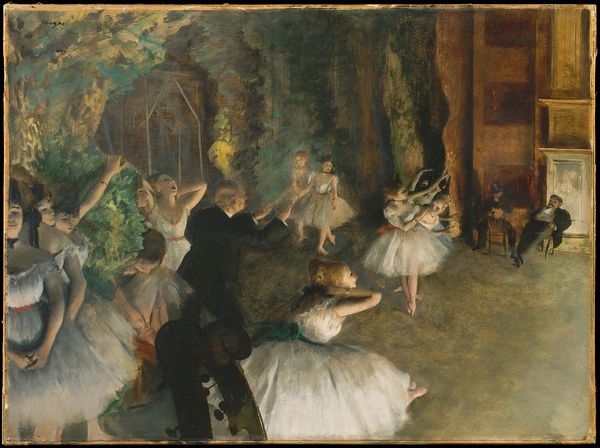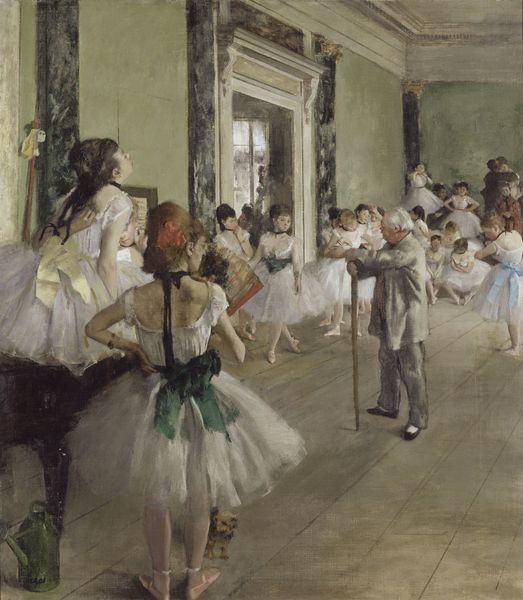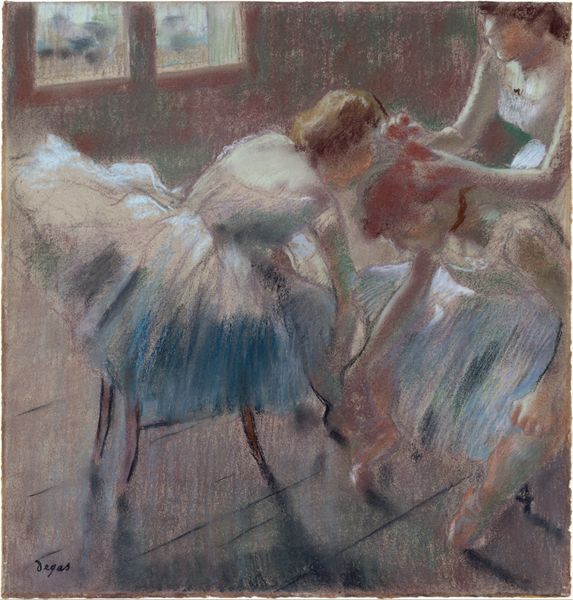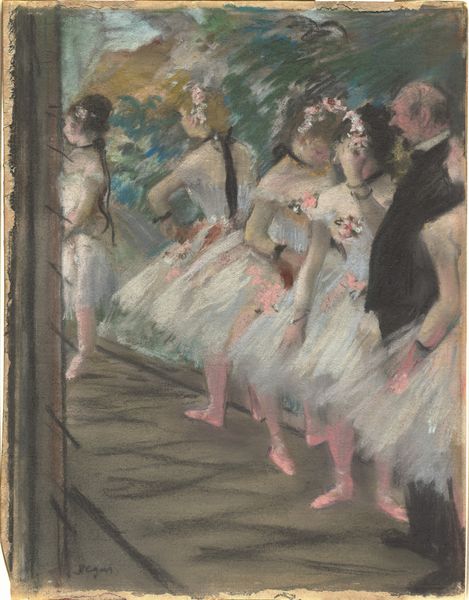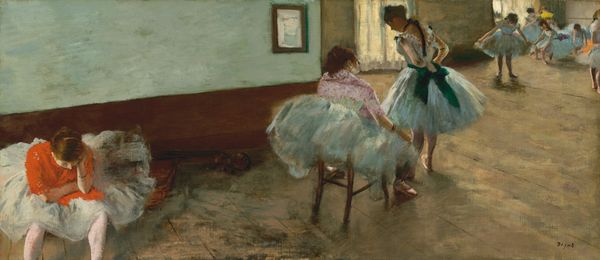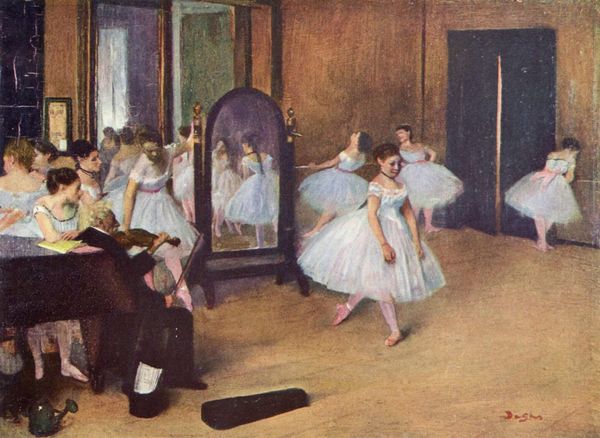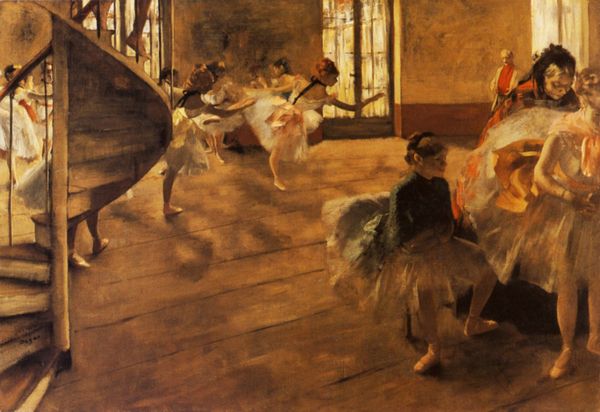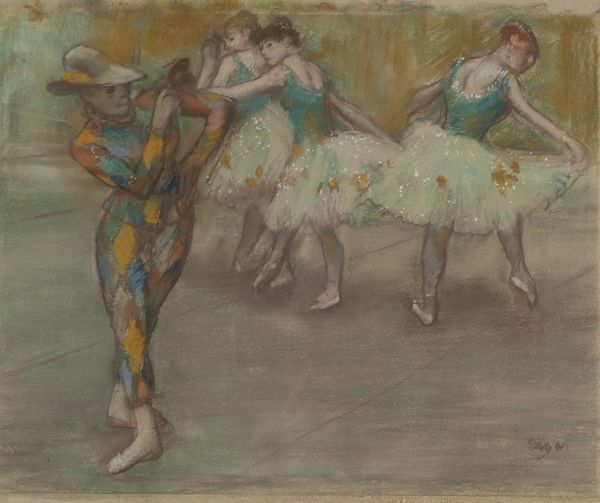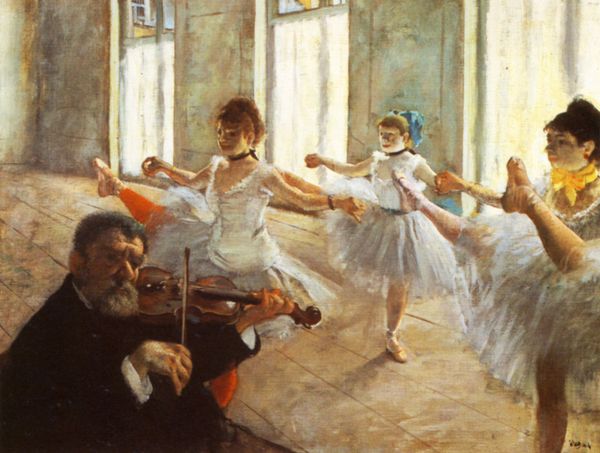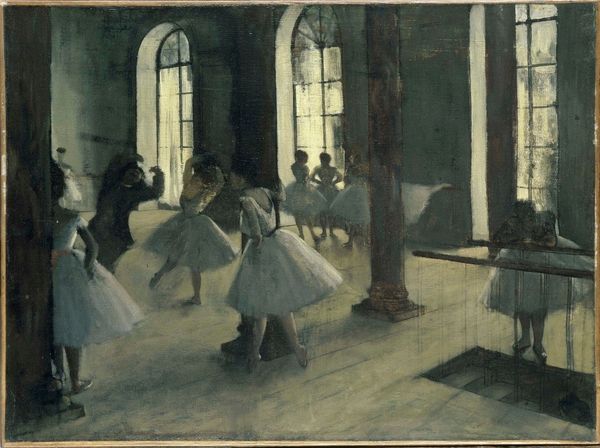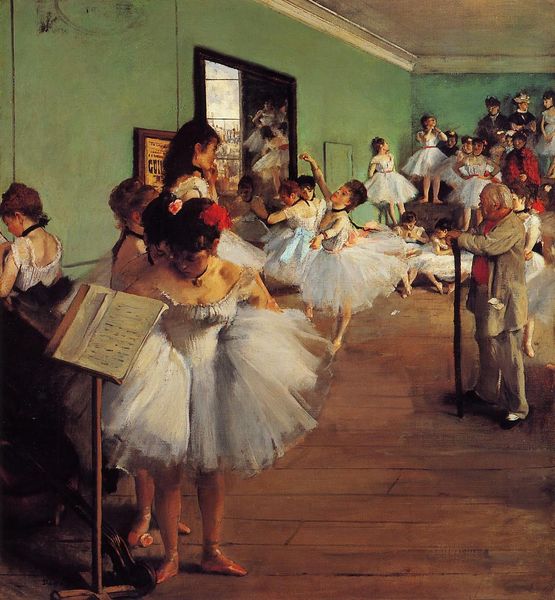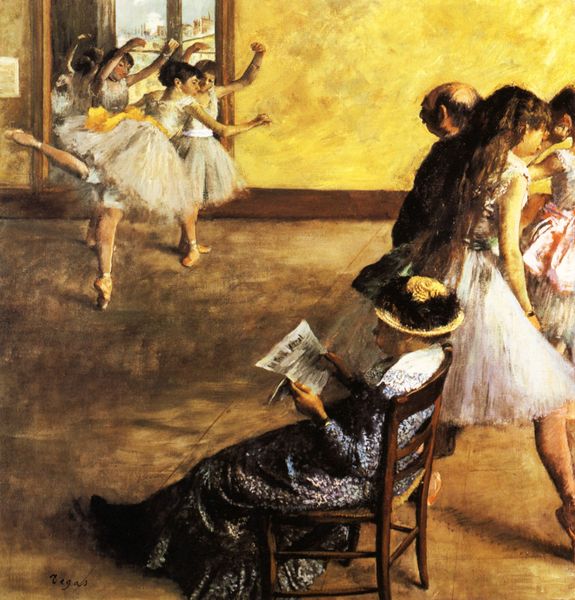
painting, oil-paint, acrylic-paint, pastel
#
portrait
#
painting
#
impressionism
#
oil-paint
#
acrylic-paint
#
genre-painting
#
pastel
#
portrait art
Dimensions: 7 3/4 x 10 5/8 in. (19.7 x 27 cm)
Copyright: Public Domain
Edgar Degas captured "The Dancing Class" with pastel over brush and ink on paper around 1871–1874. The mirror, prominently featured, acts as more than a mere reflective surface. It embodies the dancer’s quest for perfection and the relentless pursuit of an ideal self. It is also a symbol of self-awareness. Mirrors appear throughout history, from Van Eyck's Arnolfini Portrait, where it reflects unseen witnesses, to Velázquez's Las Meninas, which explores the gaze between the artist, the subject, and the viewer. Over time, the mirror shifts from an object of luxury to a psychological tool. Its presence reflects a deeper concern with identity, perception, and the subconscious. The mirror in Degas’ painting creates a psychological space, inviting the viewer to reflect on the transient nature of performance and the hidden aspects of the dancers’ discipline. It underscores how symbols reappear, transformed by culture and time.
Comments
No comments
Be the first to comment and join the conversation on the ultimate creative platform.
